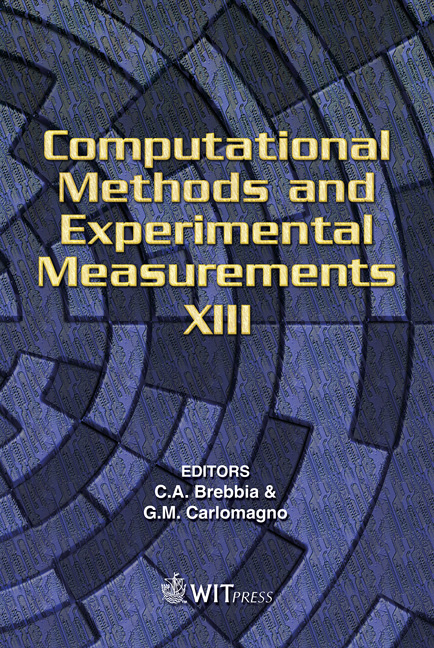Parameter Identification For Multiple Modes Of Cable-stayed Bridge Cables Using Ambient Vibration Measurements From A Single Station
Price
Free (open access)
Transaction
Volume
46
Pages
10
Published
2007
Size
504 kb
Paper DOI
10.2495/CMEM070681
Copyright
WIT Press
Author(s)
W.-H. Wu, C.-A. Liao & C.-C. Chen
Abstract
The measurements and subsequent system identification of the cables play extremely important roles in health monitoring of the whole cable-stayed bridge. The technique of ambient vibration measurement where only the output signal is available has been commonly adopted to measure the cable-stayed bridges. In this case, it is most popular in the literature to combine the random decrement method together with the Ibrahim time domain method for system identification. To apply the above two methods for cable identification, however, the problem of imperfect random decrement signatures and the difficulty of conducting well-distributed measurements at various stations of a single cable have to be overcome. The crucial time shifting parameter is first explored in this study to extend the applicability of the Ibrahim time domain method. In addition, with the mode separation technique and a novel multiple random decrement method recently proposed, an effective method to identify the parameters of several cable modes merely based on the measurement of a single station is developed and demonstrated by applying it to the velocity record of a cable of the Chi-Lu cable-stayed bridge. The validation of this method is also provided in this paper. Keywords: ambient vibration measurement, Ibrahim time domain method, time shifting, mode separation, multiple random decrement method. 1 Introduction The cables of cable-stayed bridges are the primary force-transmitting members of the whole structure system. Consequently, the measurements and subsequent system identification of the cables play extremely important roles in health
Keywords
ambient vibration measurement, Ibrahim time domain method, time shifting, mode separation, multiple random decrement method.





